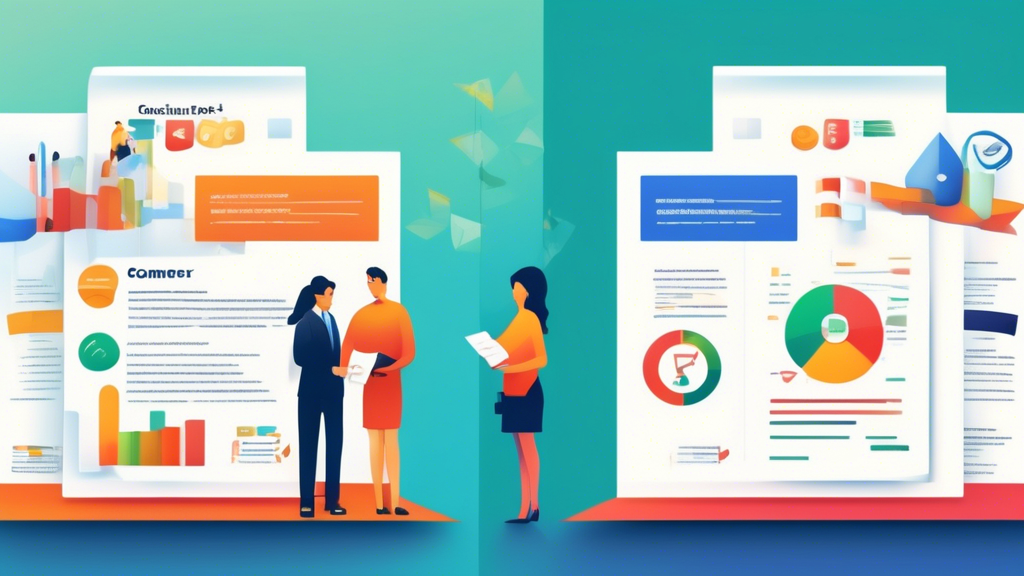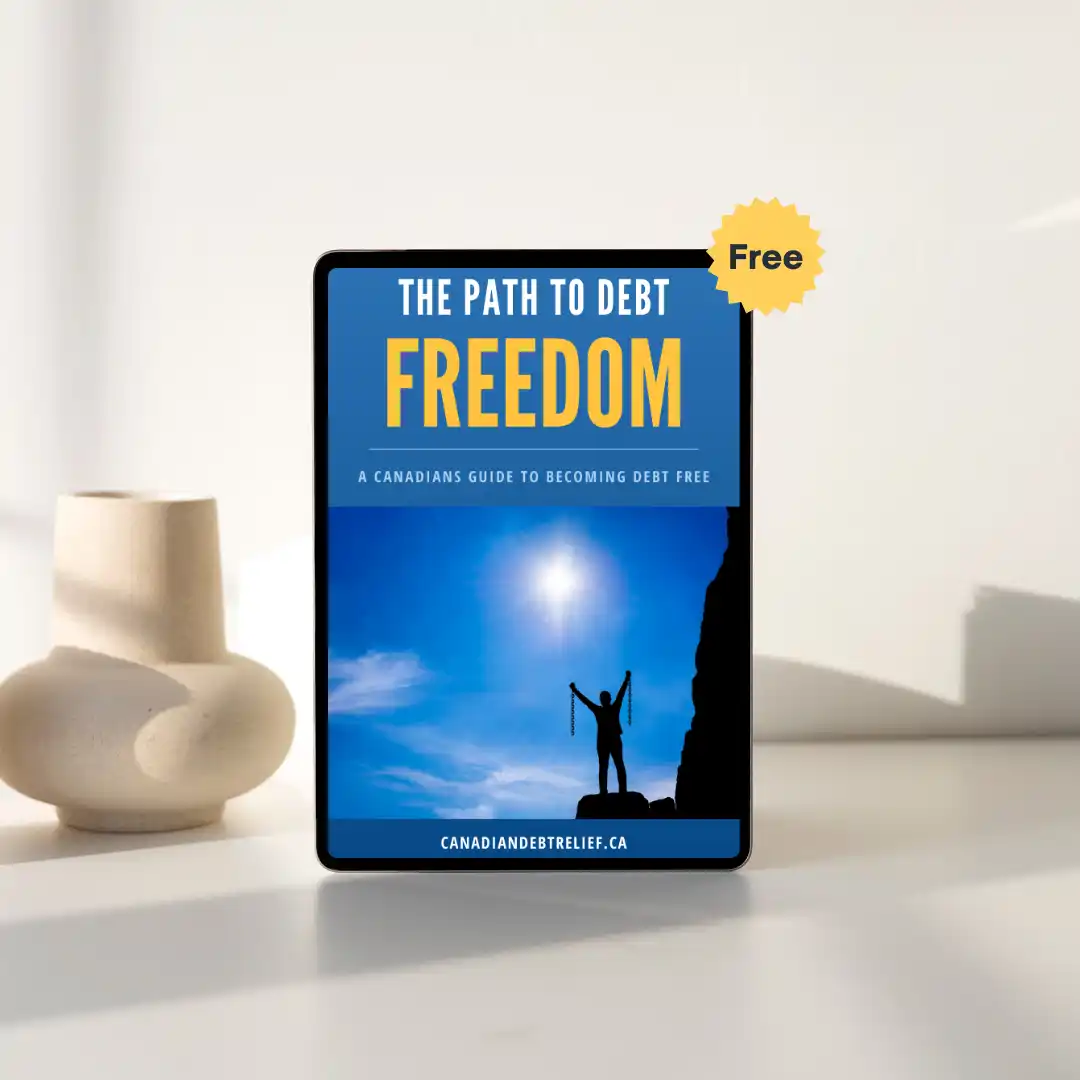Navigating financial distress can be an overwhelming journey, prompting many to seek viable solutions such as a consumer proposal or bankruptcy. Choosing between these two paths can significantly impact your financial future, so it’s crucial to understand the ins and outs of each option. A consumer proposal involves negotiating with creditors to pay back a portion of your debt over an extended period, often resulting in less drastic consequences for your credit score and financial future. On the other hand, declaring bankruptcy provides a more immediate resolution, discharging most of your debts but typically comes with more severe long-term ramifications. This article delves into the fundamental aspects of both a consumer proposal and bankruptcy, offering a thorough comparison of their advantages and disadvantages. By exploring eligibility criteria, financial implications, effects on your credit score, and other critical factors, we aim to help you make an informed decision about whether a consumer proposal or bankruptcy is the best fit for your financial situation.
Understanding the Basics: Consumer Proposal and Bankruptcy
When faced with insurmountable debt, it’s essential to explore viable solutions to alleviate financial stress and regain control over your finances. Two primary options often come to the forefront: a consumer proposal or bankruptcy. Both solutions offer a structured way to deal with overwhelming debt, but they function differently and suit different situations. By understanding what each method entails, you can make an informed decision about which path to pursue.
What is a Consumer Proposal?
A consumer proposal is a formal, legally binding agreement between you and your creditors to repay a portion of your debt over an extended period, typically up to five years. Unlike bankruptcy, which can be more restrictive, a consumer proposal provides an opportunity to negotiate the terms of your repayment, offering more flexibility while protecting your assets. Negotiating with creditors via a licensed insolvency trustee (LIT), you can often secure reduced payments that fit within your financial means.
Definition and Key Aspects of a Consumer Proposal
A consumer proposal is designed to help individuals who are struggling with debt but wish to avoid the severe repercussions of bankruptcy. This option allows you to repay debts in a more manageable way without losing control of your personal assets. Key aspects include:
- Debt Relief: Reduce the total amount of debt you owe by negotiating with creditors.
- Extended Payment Terms: Spread the repayment over a period of up to five years, making it easier to manage monthly payments.
- Creditor Protection: Once the proposal is filed, creditors are prevented from initiating or continuing collection activities, including wage garnishments.
- Asset Retention: Unlike bankruptcy, you get to retain your assets, such as your home and vehicle, as long as you continue to meet your proposed payments.
Eligibility Criteria for Filing a Consumer Proposal
Not everyone qualifies for a consumer proposal. To be eligible, you must:
- Be Insolvent: You must owe between $1,000 and $250,000, excluding the mortgage on your primary residence, and be unable to meet your debt obligations as they become due.
- Demonstrate Income: You should have a stable source of income that allows you to commit to making the agreed payments as part of the proposal.
- Collaborate with a Trustee: Work with a licensed insolvency trustee, who will prepare and submit the proposal on your behalf.
What is Bankruptcy?
Bankruptcy is a legal process that provides immediate relief from overwhelming debt by discharging the majority of your unpaid obligations. It offers a fresh start, but this relief comes with significant consequences, such as loss of assets and long-term effects on your credit score. Declaring bankruptcy involves surrendering your non-exempt property to a trustee who then distributes the proceeds to your creditors. Filing for bankruptcy can provide a definitive solution to debt problems, but it should be considered a last resort due to its severe implications.
Definition and Fundamental Elements of Bankruptcy
Bankruptcy is fundamentally about wiping the slate clean. Here are the core elements of the process:
- Debt Discharge: Most unsecured debts, such as credit card debt and medical bills, are discharged, giving you a fresh start.
- Asset Liquidation: You may be required to sell non-exempt assets to contribute to your debt repayments. Exempt assets vary by jurisdiction but typically include basic personal possessions and essential household items.
- Automatic Stay: An automatic stay is issued when you file for bankruptcy, which immediately halts most creditor actions, including collections and lawsuits.
- Financial Counseling: As part of the bankruptcy process, you must complete mandatory financial counseling sessions to help you manage your finances better in the future.
Qualification Requirements for Declaring Bankruptcy
Bankruptcy isn’t an option for everyone; it requires specific conditions to be met:
- Insolvency: You must be unable to meet your debt obligations, indicating that your liabilities exceed your assets or you cannot pay your debts as they come due.
- Debt Amount: While there is no minimum or maximum amount of debt required to file for bankruptcy, it is usually considered when the debt is overwhelming and unmanageable.
- Licensed Insolvency Trustee: You must work with a licensed insolvency trustee, who will administer the bankruptcy procedure, including the sale of assets and distribution of funds to creditors.
See if you qualify for debt relief

Comparing Consumer Proposal and Bankruptcy: Pros and Cons
Advantages and Disadvantages of Opting for a Consumer Proposal or Bankruptcy
Benefits of a Consumer Proposal
Choosing between a consumer proposal or bankruptcy requires a comprehensive understanding of each approach’s distinct advantages. A consumer proposal offers several notable benefits, making it an attractive option for many individuals facing financial challenges.
- Avoiding Bankruptcy: The most significant advantage of a consumer proposal is that it helps debtors avoid declaring bankruptcy, which has more severe repercussions on their financial and personal lives.
- Debt Reduction: Consumers can often negotiate to pay a fraction of the total debt, thus achieving significant debt reduction.
- Protection from Creditors: Once a consumer proposal is filed, creditors must halt collection actions, providing immediate financial relief and peace of mind to the debtor.
- Asset Retention: Unlike bankruptcy, a consumer proposal usually allows individuals to keep their assets, including their homes and vehicles.
- Improvement of Cash Flow: By consolidating debt into manageable monthly payments, individuals can better handle their financial obligations.
Downsides of a Consumer Proposal
Despite its benefits, a consumer proposal has certain drawbacks that should be thoroughly considered before making a decision.
- Extended Duration: A consumer proposal typically spans three to five years, which is a longer commitment compared to the nine-month period associated with most bankruptcies.
- Credit Impact: Although less severe than bankruptcy, a consumer proposal still negatively affects the debtor’s credit score, usually staying on the credit report for three years after completion.
- Disapproval Risk: There is a possibility that creditors may reject the consumer proposal, forcing the individual to consider other debt relief options.
- Commitment to Payments: Failing to adhere to the proposed payment schedule can result in the cancellation of the consumer proposal and potentially lead to bankruptcy.
Pros of Filing for Bankruptcy
In contrast, bankruptcy presents its own set of potential advantages, making it a viable consideration for those unable to manage their debts through a consumer proposal.
- Fresh Financial Start: Bankruptcy offers a clean slate by discharging most types of unsecured debts, allowing individuals to rebuild their financial life from scratch.
- Shorter Process: For first-time bankruptcies with minimal assets, the process can be completed within nine months, offering quicker relief.
- Immediate Relief: Upon filing for bankruptcy, the automatic stay prevents creditors from pursuing collection efforts, garnishing wages, or taking legal action.
- Minimal Monthly Payments: In cases where the debtor’s income is below a certain threshold, the requirement for monthly payments can be significantly reduced.
Cons of Bankruptcy
However, the decision to file for bankruptcy carries considerable drawbacks that can impact an individual’s financial standing and life choices.
- Severe Credit Hit: Bankruptcy remains on the credit report for up to seven years (or fourteen years for repeat bankruptcies), severely impairing the ability to obtain future credit or loans.
- Asset Loss: Individuals may need to surrender non-exempt assets to the bankruptcy trustee, including valuable property and investments.
- Stigma and Personal Impact: The social stigma associated with bankruptcy and its impact on self-esteem can be challenging for some individuals to manage.
- Limited Travel and Occupational Restrictions: Certain professional licenses or job opportunities may be restricted, and international travel can become complicated.
Factors to Consider When Choosing Between a Consumer Proposal or Bankruptcy
Making the decision between a consumer proposal or bankruptcy should be guided by clear understanding and consideration of various factors:
Financial Implications
Assessing your financial situation is paramount. Determine your capacity to meet the repayment terms of a consumer proposal versus the immediate but severe impact of bankruptcy on your debts and assets.
Impact on Credit Score and Long-Term Financial Health
Your credit score plays a crucial role in your financial future. While both options negatively affect your credit, a consumer proposal generally has a lesser and shorter duration impact compared to bankruptcy. Consider how important access to future credit is for you and your recovery plans.
Legal and Administrative Costs
Evaluate the costs associated with each option. A consumer proposal may involve negotiation and legal fees, while bankruptcy comes with trustee fees and other administrative costs. Weigh these expenses against your current financial capabilities.
Recovery Period and Future Financial Opportunities
Think about the length of your repayment plan and the time needed to rebuild your credit. If you need a quicker path to financial normalcy, bankruptcy might offer a faster, albeit tougher, route. Conversely, a consumer proposal, although longer, might provide a more manageable recovery process.
Ultimately, choosing between a consumer proposal or bankruptcy depends on your unique financial circumstances and future goals. Careful consideration, and possibly consulting with a financial advisor, will help you make the most informed and beneficial decision for your situation.
Deciding between a consumer proposal or bankruptcy is a significant financial decision that can influence your economic future in various ways. Both solutions offer pathways to alleviate burdensome debt, but they come with distinct characteristics and implications.
A consumer proposal is a formal agreement negotiated with creditors to repay a portion of your debt over time. This option typically suits individuals with a steady income who are keen to avoid the more severe consequences of bankruptcy. It provides benefits such as retaining assets, avoiding stigma, and limiting the long-term impact on your credit score. However, it requires committing to a structured repayment plan, and the associated legal and administrative costs can be high.
On the other hand, bankruptcy is a legal process where your assets may be liquidated to repay creditors, offering a fresh start by erasing most of your debts. It is often considered a last resort due to the severe impact it has on one’s credit score, potential loss of assets, and the stigma attached. Nevertheless, it can provide immediate relief from debt and halt legal actions from creditors.
When choosing between a consumer proposal or bankruptcy, consider your financial status, income stability, ability to adhere to a repayment plan, and how each option may affect your long-term financial health. Legal and administrative costs also play a role, as does the recovery period and the ability to rebuild your financial standing.
Ultimately, there is no one-size-fits-all answer. Carefully weigh the pros and cons of each option in the context of your unique situation. Consulting with a financial advisor or a licensed insolvency trustee can provide valuable guidance tailored to your specific circumstances, helping you make an informed decision and paving the way towards financial recovery and stability.
See if you qualify for debt relief
